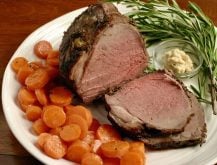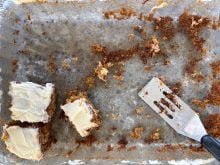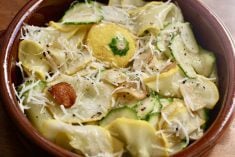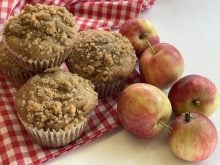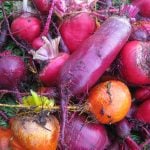During the first and second world wars, many Canadian servicemen fell in love and married British and European women, who came to be known as “war brides.”
It is estimated that 48,000 women married Canadian servicemen during or following the Second World War.
They were mostly from England, Ireland and Scotland, but a few thousand were from Holland, Belgium, Italy, France and Germany.
Read Also

Accurate accounting, inventory records are important
Maintaining detailed accounting and inventory records is not just a best practice; it’s a critical component of financial health, operational efficiency and compliance with programs like AgriStability.
By early 1946, troop ships were reassigned to transport war brides and their 22,000 children to join their husbands and fathers in Canada.
To help these women adjust to Canadian ways, food and shopping, the federal Department of National War Services’ Women’s Voluntary Services Division, in collaboration with the consumer sections of the Wartime Information Board and the Department of Agriculture, prepared a 32-page booklet entitled Canadian Cook Book For British Brides as a practical form of welcome to the Canadian way of life.
The introduction notes that the war brides would find many things similar to their former homes, so the focus of the booklet was to help them adjust to the differences that they would find.
The first difference mentioned was that they wouldn’t find a scullery in their Canadian kitchen. In British homes, the scullery was a room at the back of the house where the pots, pans and dishes were washed and stored. The food preparation was done in a totally separate room.
The brides would have experienced years of food rationing during the war, so the well-stocked Canadian grocery shelves and the in-season abundance of locally grown fruit and vegetables would be a delight for them.
Unfortunately, fruit with which they were most familiar, such as gooseberries, currents and blackberries, were relatively scare in most of Canada.
Many foods in Canada were known by different names. For example, treacle was called molasses.
It was recommended that the brides talk to a butcher to become familiar with the names of Canadian cuts of meat.
Canadian flour was quite different, so their old cake recipe probably wouldn’t work as well.
Butter was more readily available in Canada and was used in cooking and baking rather than the margarine, with which the brides had become familiar. The term shortening found in recipes in Canada referred to cooking fats and included butter, lard, margarine and various blended shortenings.
For Canadian meal patterns, the traditional British afternoon “tea” was considered a treat rather than a daily routine, probably because the evening meal was usually served around 6 p.m. Dinner was most often served in the middle of the day between 11:30 and 1:30 and consisted of a simple two-course meal, a meat dish with vegetables and a dessert and tea, coffee or milk.
Dessert was the last course for either dinner or supper.
The booklet mentioned that a frequent question that may be asked before or after the first course is “what’s for dessert?” And “if you ask your husband what he’d like for dessert, his answer will probably be ‘anything, as long as it’s pie.’ ” Undoubtedly Canada’s favourite dessert was and possibly still is pie.
Double crust pies with a generous filling of fruit, open pies with a meringue-topped filling or deep-dish fruit pies were all popular.
It was also mentioned that for Canadians, a “tart” means a little individual pie, with any traditional pie fillings or jam.
Butter tarts
Butter tarts are considered a Canadian creation and would have been new to the war brides.
This recipe makes one dozen medium-size tarts.
- 1 c. brown sugar 250 mL
- 1/4 c. butter 60 mL
- 1 egg
- 1 c. currants or seedless raisins 250 mL
- 2 tbsp. lemon juice 30 mL
- or 1/2 tsp. vanilla
Cream butter, add sugar and mix thoroughly. Add well beaten egg, mix well. Add fruit and flavouring.
Line tart tins with pastry, fill with the mixture. Bake at 375F (190C) 10 to 12 minutes.
Adapted from Nellie Lyle Pattinson’s Canadian Cook Book, The Ryerson Press, Toronto, page 310.
Several cookbooks were recommended as also being useful for the newcomers, one being Nellie Lyle Pattinson’s Canadian Cook Book. Interestingly, two editions of this cookbook have been in my kitchen since before I was married.
Feathery light steamed and baked puddings were recommended during cold weather, but it was “best to avoid suet pudding unless your husband acquired a taste for it while overseas.”
It was suggested that milk puddings, custards and gelatine desserts were used year-round as well as fresh, cooked and canned fruits. However, custard sauce, a British tradition, was hardly ever served with fruit in Canada.
It was noted that ice cream was popular, and when served with a fruit or sweet sauce, it was called a “sundae.”
With a light dessert, cake or cookies were usually served. For most Canadians, almost any dessert is improved with a topping of whipped cream.
The third meal of the day may be called supper or lunch.
During winter, a hot dish is served while in the summer an all-cold meal would be served.
It was usually a two-course meal, but often a soup or juice were also included.
Scalloped dishes such as macaroni and cheese or a combination of meat or fish with vegetables were common.
Other frequent dishes were cold meats with hot potatoes, baked beans, egg dishes and potato or fresh vegetable salads.
Another popular combination was cream soup followed by a substantial salad and a light dessert of fresh, cooked or canned fruit with cake, cookies, hot biscuits or muffins.
Scalloped dishes were popular for lunch or supper and were an excellent way to use up small amounts of leftovers. Any combination of left-over diced, cooked meat, fish, vegetables, hard-cooked eggs, cooked spaghetti, macaroni or noodles could be used.
A scalloped dish starts with a basic white sauce to which cheese may be added. This sauce can also be used to make a classic baked macaroni and cheese dish by substituting cooked macaroni for the leftovers.
The sauce could also be used to make a fresh scalloped vegetable dish using potatoes, broccoli, cauliflower or carrots.
Basic sauce with leftovers
This recipe serves two to three.
- 2 tbsp. fat 30 mL
- 2 tbsp four 30 mL
- 1/4 to 1/2 tsp. salt 1 to 2 mL
- dash of pepper
- 1 c. milk 250 mL
- 1/2 c. grated cheese (optional) 125 mL
- 2 c. any combination of leftover foods 500 mL
- 2 tbsp. breadcrumbs 30 mL
Melt fat, blend in flour, salt and pepper and slowly stir in milk. Stir constantly until sauce has thickened. Remove from heat, add grated cheese and stir until cheese melts.
Arrange alternate layers of leftovers with sauce in a greased casserole. Top with crumbs and bake in a moderately hot oven, 375F (190C), until thoroughly heated and brown on top, 20 to 30 minutes.
Another area of concern was how the new Canadian homemakers could maximize their food preparation time.
Baking powder biscuits were recommended as a great favourite for Canadians and an alternative to making bread.
To speed the biscuit preparation, the dry ingredients and fat could be combined and then stored in a covered container in a cool place for a week or two.
With this mixture, plain biscuits or raisin or cheese biscuits could be quickly made and served as a bread substitute.
For a quick dessert, brown sugar or sugar and cinnamon pinwheel rolls could be made.
A plain biscuit made with a little additional sugar and an egg yolk could be served hot with sliced or crushed fresh fruits and topped with more fruit and whipped cream for an attractive dessert.
A meal option was to use the mixture to make dumplings with stew.
Basic baking powder biscuit recipe
This recipe yields 12 medium biscuits.

To make a larger batch to have on hand for quick meals, double or triple the recipe. Use a scant 2 1/4 cups (560 mL) of the dry mixture for one batch of biscuits.
- 2 c. sifted all-purpose flour 500 mL
- 1 tbsp. baking powder 15 mL
- 1 tsp. salt 5 mL
- 3 tbsp. shortening 45 mL
- 2/3 c milk 150 mL
Mix and sift dry ingredients. Cut in fat until mixture resembles fine breadcrumbs. (This can be stored covered in cool place.) Add milk slowly to make a soft but not sticky dough. Toss on a floured board and roll lightly to 1/2-inch (1 cm) thickness, cut and place on a baking sheet and bake in a hot 425F (220C) oven for 12 to 15 minutes.
For fruit short cake, add two tbsp. sugar to dry ingredients and beat one egg yolk with the milk.
For stew dumplings, reduce fat to one tbsp. (15 mL) and increase milk to 3/4 cup (175 mL). Drop by spoonful on top of boiling stew and remove some gravy if necessary so dumplings rest on top of the meat and vegetables. Cook closely covered for 15 minutes — don’t peek.
The women writing the book wanted to assure the war brides that they would be welcomed into the communities they settled into and that when they were ready, there would be organizations, clubs and church groups that would look forward to receiving the newcomers.
The war brides’ talents and “experiences would enrich whatever group they joined.”
Betty Ann Deobald is a home economist from Rosetown, Sask., and a member of Team Resources. Contact: team@producer.com.





